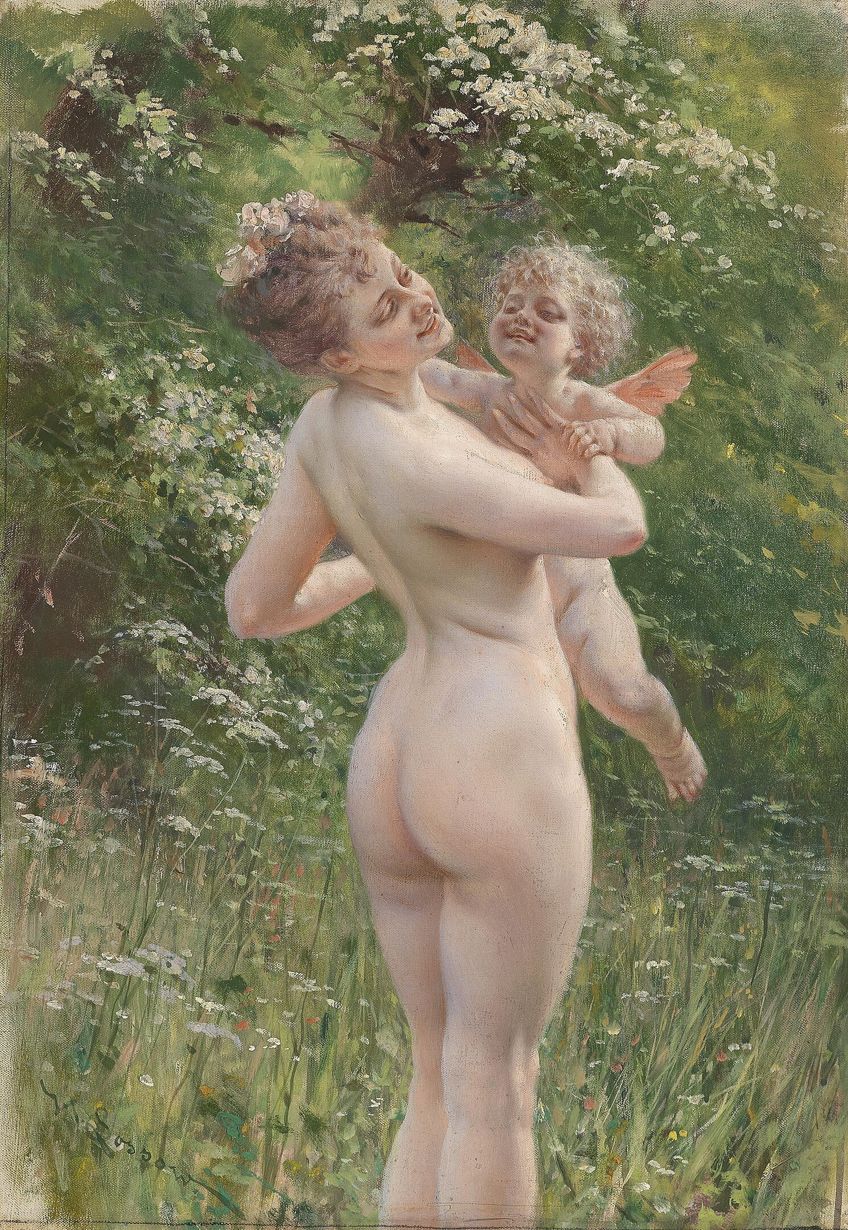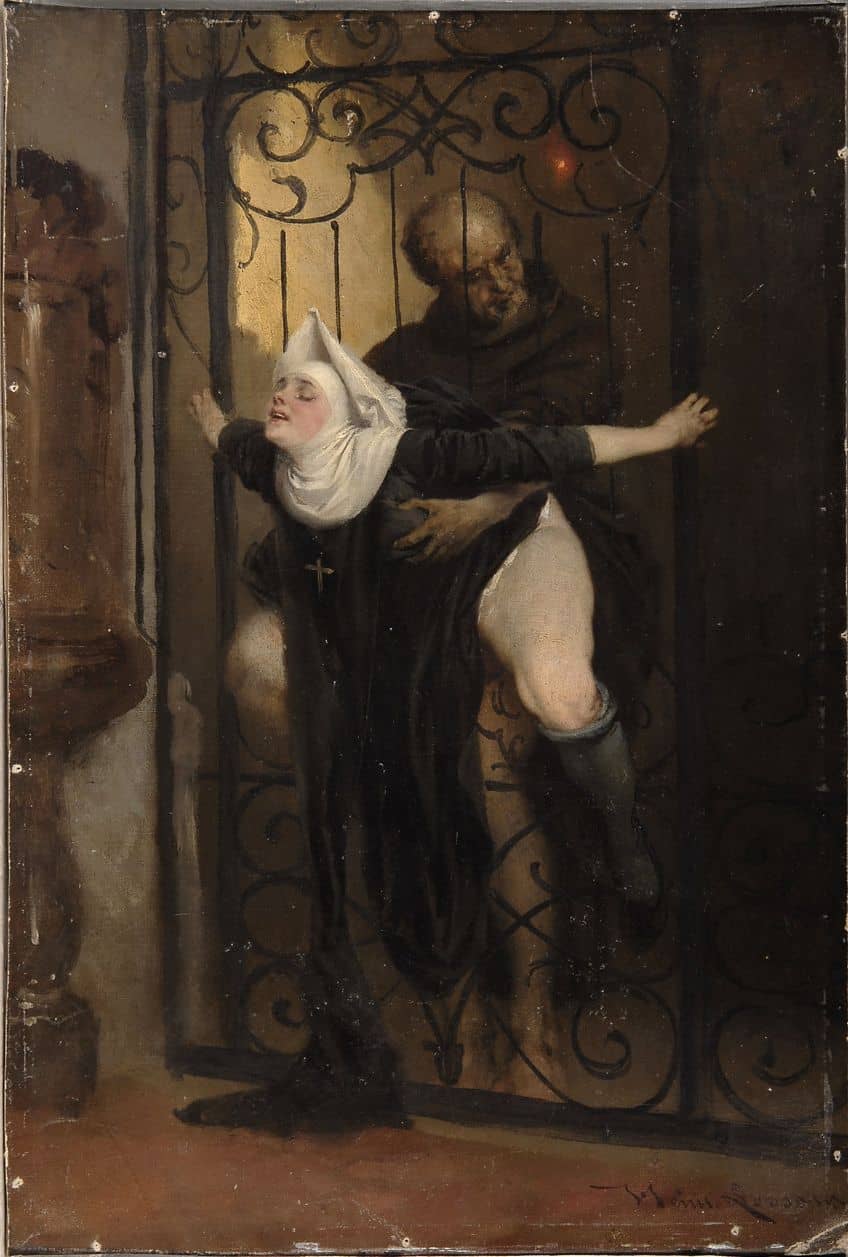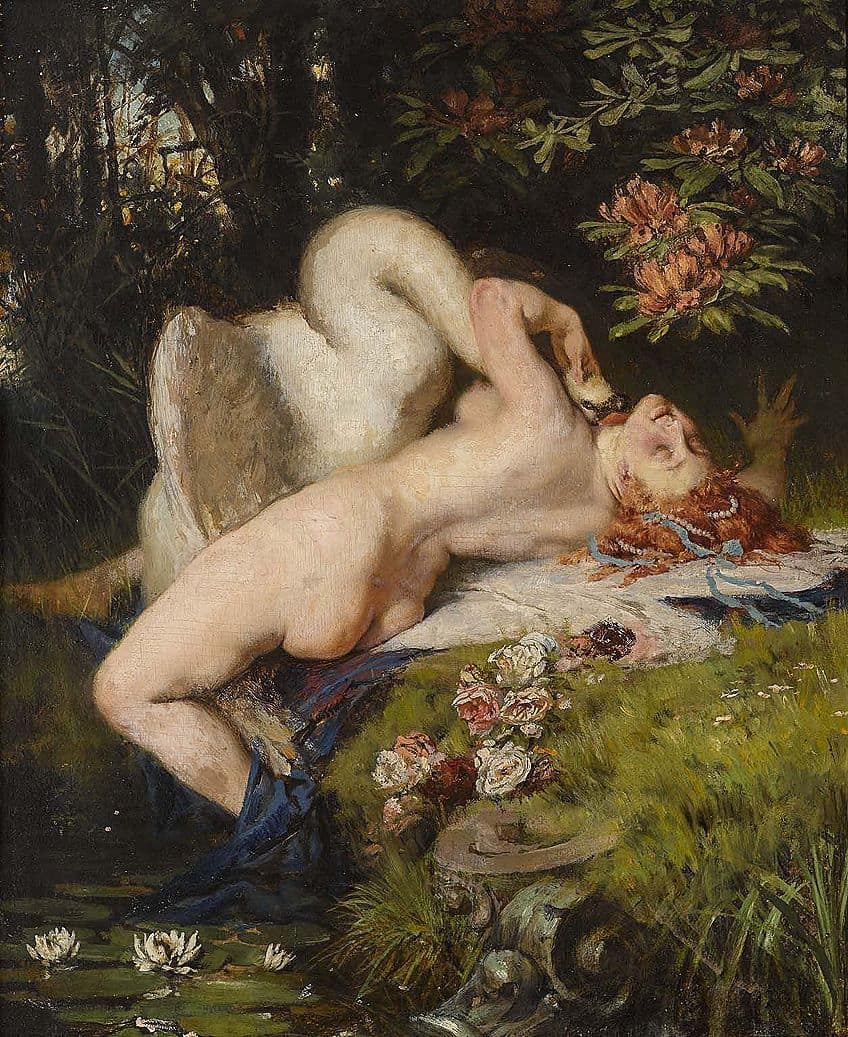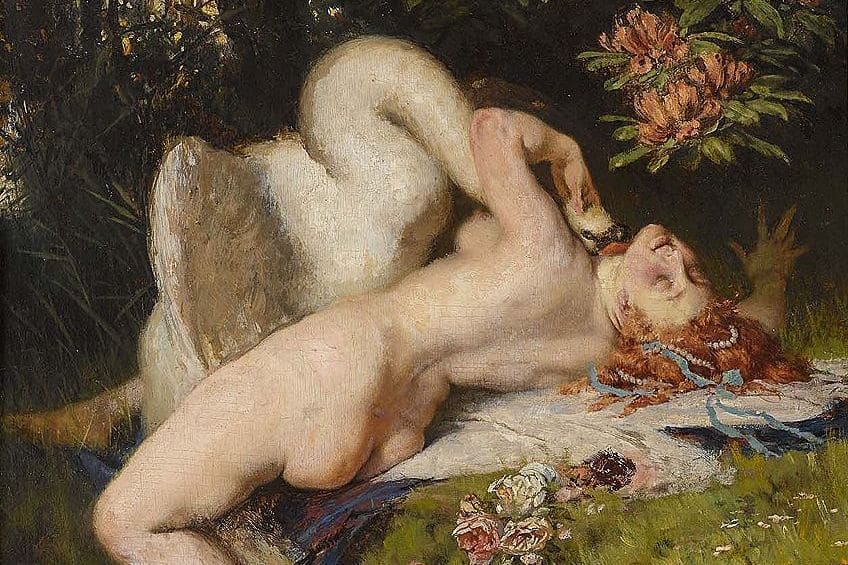Heinrich Lossow – The Famous German Genre Painter
Who was Heinrich Lossow, and why was he so famous? Heinrich Lossow was a popular genre painter of the 19th century who was best known for his interest in erotic and pornographic illustrations. In this article, we will introduce you to one of the 19th century’s most famous genre painters who happened to be a part-time pornographer. Read on for more about the intriguing and mysterious life of Heinrich Lossow, and the inspiration behind some of his most erotic works.
The Life and Art of Heinrich Lossow
| Name | Heinrich Lossow |
| Date of Birth | 10 March 1843 |
| Date of Death | 19 May 1897 |
| Nationality | German |
| Associated Movements, Themes, and Styles | Genre painting, erotic art, pornography illustration, portraiture, and the Rococo style |
| Mediums | Painting, drawing, illustration, engraving, and printmaking |
| Famous Artworks | ● The Sphinx and the Poet (1868) ● The Sin (c. 1880) ● Boreas and Orithya (1880) ● Illustration for Glaspalast München (1891) ● Love Whispers (1897) |
Who was Heinrich Lossow? And what made him such a famous artist? Heinrich Lossow was a popular German genre painter who grew up in Munich alongside two other brothers who also specialized in art and painting. Heinrich’s father, Arnold Hermann Lossow, was also a famous artist and sculptor from Bremen who was taught by German classical sculptor Ernst Mayor. While his brother specialized in historical and wildlife painting, Heinrich chose a different route.
Heinrich was taken under his father’s wing where he received basic art training and later studied under the guidance of German historical painter Karl Theodor von Piloty at the Munich Academy of Fine Arts.
While under Piloty’s direction, Lossow honed his skills during his travels to Italy and France, where he adopted the Rococo style. Lossow also received artistic guidance from Carl Theodor von Pietz and later went on to become an illustrator for various publishers. One of Lossow’s best contributions to illustration was the artwork for an edition of The Merry Wives of Windsor, authored by the renowned William Shakespeare.

So, what made this painter so famous? Although little is known about Lossow’s early life and career, he was known to be a prolific pornographic illustrator, who operated on a part-time basis. Lossow’s interest in the Rococo style was best demonstrated in his paintings of idyllic nymphs and bucolic rural scenes, and cupids, which were in high demand at the time. Many of his works also showcase his techniques in portraiture, which focus on female subjects, showcasing them as gentle, happy, and often in the context of intimate settings, both emotional and physical.
A well-established pornographer in his spare time, Lossow produced many erotic artworks that border on pornographic intent rather than artistic.
One of Lossow’s best-known works was The Metamorphoses and the Triumph of Cupid, which was inspired by pornographic iconography and received collector’s status. Lossow’s paintings often demonstrated his grandiose and Romantic approach to mythological figures, which also reflected his meticulous attention to detail and eye for rich color. He was more identified with his alignment to academic technical teachings in painting and admired for his mastery and fusion of classical styles. For Munich-based artists of his time, Lossow would have frequently exhibited at the Glaspalast and other local galleries, which were associated with artists from the Munich Academy of Fine Arts. Later in his career, Lossow also served as a curator at the Schleissheim Palace in Oberschleißheim.
The Sin (c. 1880) by Heinrich Lossow
| Date | c. 1880 |
| Medium | Oil on canvas (mounted on cardboard) |
| Dimensions (cm) | 55 x 37 |
| Where It Is Housed | Private collection |
The Sin is one of the most well-known Lossow paintings that gained considerable controversy surrounding its models, portrayed as a nun and a monk, speculated to be Cardinal Cesare Borgia, engaging in passionate sex. The painting was created around the 1880s and inspired by the famous Vatican-based orgy, which was known as the Ballet of Chestnuts.
Featuring neither a ballet nor chestnuts, the painting portrays a nun and a monk enjoying a carnal moment of passion on a pious Sunday evening.
The banquet was hosted by Cardinal Cesare Borgia who invited around 50 prostitutes to the Papal Palace as the entertainment feature of the evening. The entertainment involved the prostitutes crawling on their hands and knees collecting chestnuts that were strewn on the ground, using their mouths while the clergymen watched. The clergy turned sex into a competition for men and offered special prizes to those who could have the most sex. At the time, men were admired for their virility and as such, these games were efforts to prove themselves to “be men”.

According to written accounts of the party by Johann Burchard, the event involved “naked courtesans crawling around between candelabras, picking up chestnuts with their mouths”. It is unknown as to why Lossow painted this specific scene featuring a nun and a monk and why he titled it as he did, however, it is clear that the Ballet of Chestnuts reflected other aspects of society that contradicted itself. Perhaps the painting was an account of a real scene to place both nuns and monks into question, and as such, the Church itself.
Upon the release of the painting, Lossow received harsh criticism from both the Church and the general public who condemned his brazen accusations.
While the most memorable paintings have always managed to stir some sort of controversy, Lossow’s The Sin painting also left a profound impact on the art world and Contemporary popular culture through its unapologetic depiction of the alleged Banquet of Chestnuts. The painting is also a symbol of the contradictory character of the Borgia family who were well-documented throughout the Renaissance and expected to uphold high moral standards. The Sin painting remains an iconic exploration of passion, sin, lust, and social critique that challenged the common viewpoint of the Borgia family and proposed questions about their alleged lack or abundance of debauchery.

Aside from its bold subject and controversial nature, one can also admire the technical expertise of Lossow who demonstrated his fine brushwork by drawing the viewer’s attention to light, color, and shadow in a complex composition that one would not imagine in a traditional erotic scene for the 19th century. The narrative power of the work alone is significant since the details of the tale of the Banquet of Chestnuts itself remain elusive. One can also pinpoint that following the narrative of the Banquet of Chestnuts, Lossow also chose to engage directly with sexual pleasure rather than the courtesans who collected the chestnuts, which added to the painting’s allure. Today, the painting remains in the hands of a private collection, which further elevates its mystery and allure. Other prominent Heinrich Lossow paintings include works such as After the Masked Ball (1893) and The Persistent Suitor (1897).
While not much has been documented about Heinrich Lossow or his travels, his legacy has been cemented in the realm of erotic art and pornographic illustration. Lossow’s passion for classical academic teaching and all things mythology, beauty, and idyllic earthly pleasures are evident in his art, and serve as an example of how the beauty of the painting and the art of painting beauty and pleasure can be leveraged as a tool for societal critique.
Frequently Asked Questions
Who Was Heinrich Lossow?
Born in Munich, Heinrich Lossow was a famous German painter who specialized in genre painting in the Rococo style. Lossow was also a pornography illustrator in his spare time, and contributed to illustrations for William Shakespeare’s The Merry Wives of Windsor (1888).
What Was Heinrich Lossow’s Most Famous Painting?
The Sin (c. 1880) was recognized as Heinrich Lossow’s most famous painting. This was due to its controversial nature in portraying an explicit sexual act between a nun and a monk during the fabled Banquet of Chestnuts.
How Much Are Heinrich Lossow’s Paintings Worth?
Heinrich Lossow’s paintings have been resold at auction on multiple occasions, and have sold for up to $14,000.
Liam Davis is an experienced art historian with demonstrated experience in the industry. After graduating from the Academy of Art History with a bachelor’s degree, Liam worked for many years as a copywriter for various art magazines and online art galleries. He also worked as an art curator for an art gallery in Illinois before working now as editor-in-chief for artfilemagazine.com. Liam’s passion is, aside from sculptures from the Roman and Greek periods, cave paintings, and neolithic art.
Learn more about Liam Davis and about us.
Cite this Article
Liam, Davis, “Heinrich Lossow – The Famous German Genre Painter.” artfilemagazine – Your Online Art Source. October 3, 2023. URL: https://artfilemagazine.com/heinrich-lossow/
Davis, L. (2023, 3 October). Heinrich Lossow – The Famous German Genre Painter. artfilemagazine – Your Online Art Source. https://artfilemagazine.com/heinrich-lossow/
Davis, Liam. “Heinrich Lossow – The Famous German Genre Painter.” artfilemagazine – Your Online Art Source, October 3, 2023. https://artfilemagazine.com/heinrich-lossow/.



